Asia’s Toughest Jobs: The fire and brimstone miners of Ijen Crater
With its wickedly steaming cyan lake, pulsing exhausts of burning sulphur and jagged peaks, Ijen Crater in East Java is entirely otherworldly. Miners endure the noxious gas of the crater to extract sulphur and carry it up steep slopes for their daily wage. It is one of Asia's toughest jobs.

Yatim is one of hundreds of miners working at Kawah Ijen, a volcanic, sulphur-spewing crater. (Photo: Jack Board)
BANYUWANGI, Indonesia: If there’s a place on Earth that could be snapshot of another planet from distant space, this is it.
With its wickedly steaming cyan lake, pulsing exhausts of burning sulphur and jagged peaks, Ijen Crater in East Java is entirely otherworldly.
During the night, a deep and malevolent energy burns the noxious gas in the crater, creating what locals call “blue fire”. Hundreds of tourists form a snaking line of light as they traverse slippery makeshift paths deep down into the belly of this volcanic cavity.
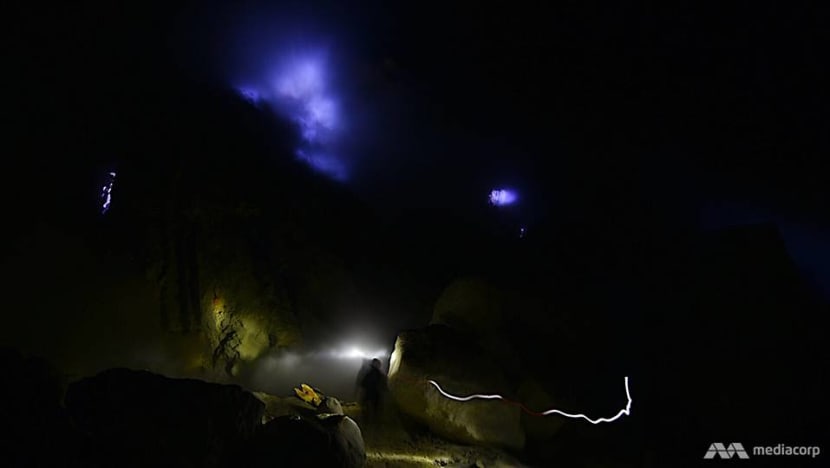
But among the flashing glow of the visitors’ expedition, their selfies hanging close to the inferno’s whipping tips, work has begun. It is just 2am.
Ijen’s miners are digging hell out of the darkness.
Yatim is one of them. The 44-year-old has begun his day earlier than usual, as many of the men here choose to do to avoid the heat of the afternoon and try to cash in on the pre-dawn tourist trade to supplement their income.
Their principal job for the seven hours they endure the crater is to extract the endlessly forming yellow sulphur on the edge of the lake. The gas is captured and then flows in liquid form through a vast pipe system. It cools and hardens where a motley squadron of miners hack it into smaller pieces.
The sulphur smoke that swirls and billows with the wind is the miners’ enemy. When it rushes like a great bilious curtain into their faces and eyes they stop, stunned for a moment, succumbing to the burning rush of gas into their lungs.
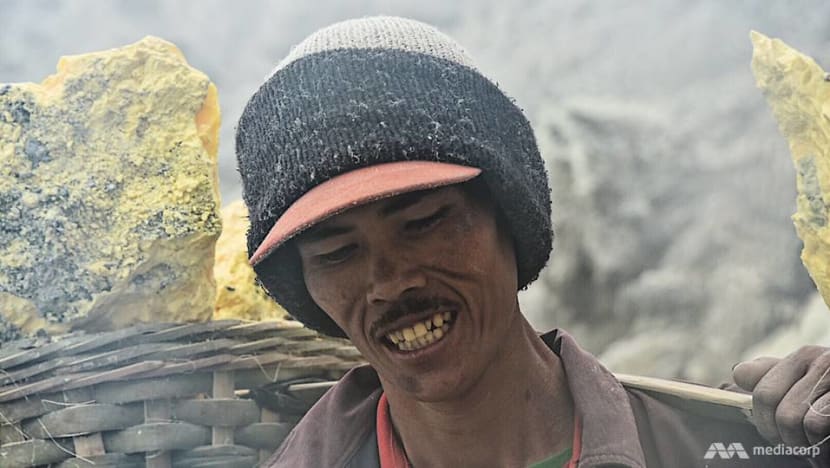
“If there is thick smoke, wind and rain like now - it’s very hard,” Yatim explains, perched on sharp rocks above the toxic cloud.
“It hurts my eyes and my nose. You will cough instantly. If it hurts really badly, you can end up vomiting. It also causes a pain in the chest,” he said.
“Those things make this job really tough.”
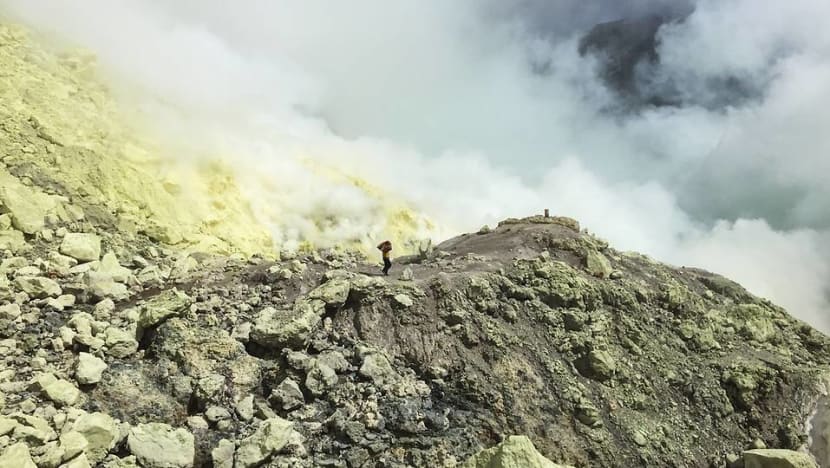
Yatim uses a plastic facemask to try and lessen the impact of the smoke, but admits its filters are long worn out. Many of the veteran miners – the oldest at 65 years – prefer to just use a cloth over their mouths, or are unable to afford the protection. Those who do use the masks have often had them donated by alarmed tourists.
Once the chunks of spawned sulphur are pulled from the ground they are piled into wooden baskets and the men turn beasts of burden and carry up to 80 kilogrammes balanced across their shoulders up the sheer incline to the crater’s rim above. They stop to rest often, each step steeped in pain.
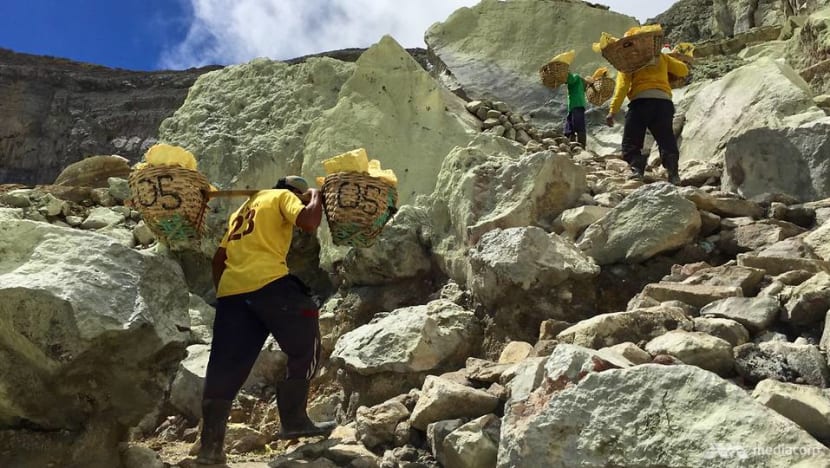
“It hurts in the hips. I also feel the pain on the shoulder, but just a little,” he said. “If there is a place to stop, I rest for a while. I don’t rush myself to go all the way up. I make a stop so I don’t get tired easily.”
It looks gruelling and feels inhuman. This is the type of job mostly resigned to bygone centuries. Here it endures.
Despite considerations to modernise or mechanise the mining process – including by a Chinese company – the miners are not calling for a workplace revolution. For with change comes the risk of them losing their jobs or part of their pay packet.

Yatim says he normally takes home about US$58 a week, dependent on the weight of brimstone he delivers to a weighing station at the bottom of the mountain. It is a regular, well-paid wage for this part of the world.
His family relies on his struggle. And Yatim thrives on his ability to provide for them.
At his modest home he proudly shows off a photo of his eldest son doing work with the Indonesian navy and he is quick to prop his seven-year-old daughter up to his lap when he returns from a shift. His efforts are aimed at ensuring they have can pursue a more comfortable future.
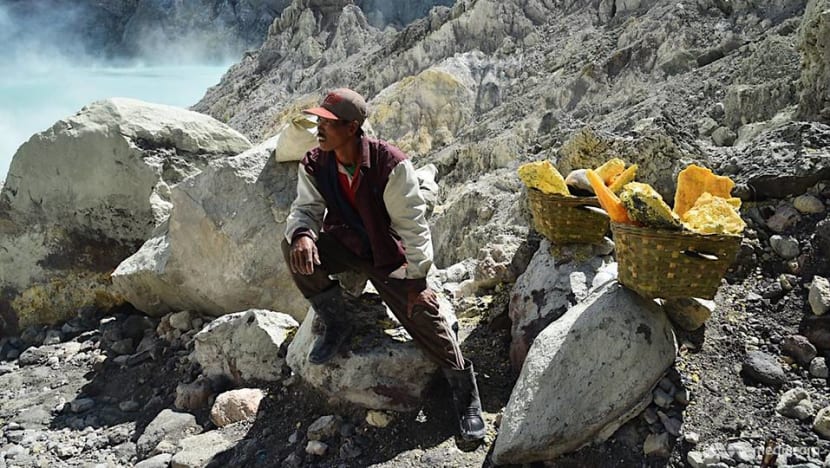
“I hope they will succeed and find a better job. Whatever dreams they want to achieve, we as parents can only support and pray for them,” he said.
“I don’t want them to be like me.
“I grew up here in Banyuwangi. As a kid, I just wanted to work. I never dreamed about doing this kind of job,” he said, explaining that previously he worked in nearby Bali doing whatever work he could find.
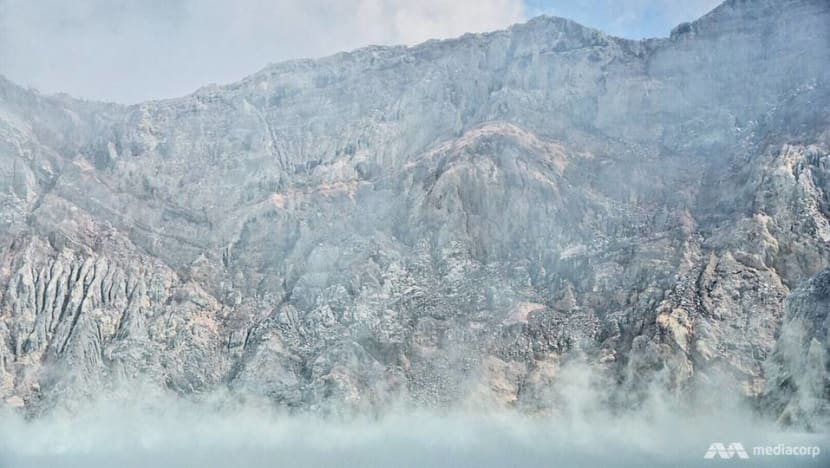
“I was afraid before I started this job. But it was kind of my call to finally choose to work here. So here I am.”
Yatim’s wife Suhaina worries about what sulphur mining is doing to his health. “I cried the first time I saw it,” she recalls of watching her husband’s tortured ascent from the mine face.
He does not share her concern though and feels vindicated by recent health checks, provided by Candi Ngrimbi, the company that processes the sulphur, which is eventually mostly used to artificially colour sugar.

“I was worried, but just a little bit. But when I checked, the result was good, nothing wrong with my lungs.”
The Licin Community Health Clinic has a programme to check the well-being of the miners two to three times per year. Kholid, the head of the clinic, said that there was no discernible impact to the respiratory systems of the men who spent hours breathing in sulphur-laced air every day.
“Mostly the problem is with their teeth. Since the acidity level of sulphur is very high, it becomes corrosive,” he said.
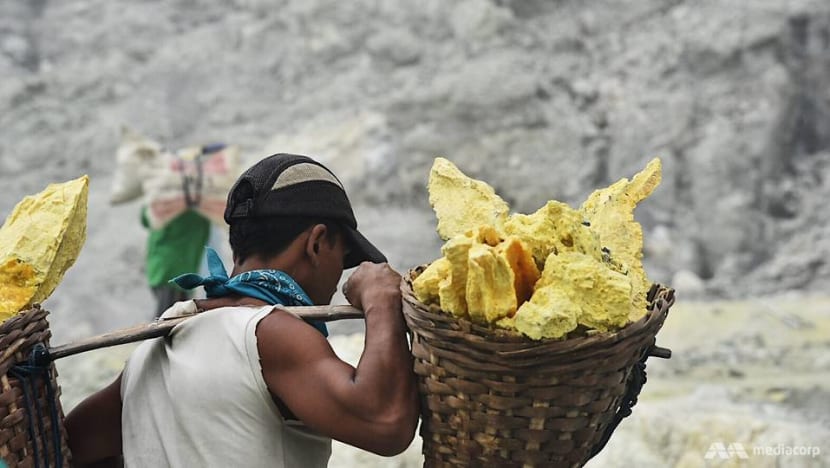
A senior employee of Candi Ngrimbi confirmed that there “has been no serious problems with the health” of their employees or the freelance majority who work at Ijen.
But there is a clear physical toll being placed on the likes of Yatim and his 250-odd fellow miners. Already the 12-year veteran of Ijen has had to miss five months of work due to a badly broken foot, which placed a serious economic strain on his family.
“Fortunately, my wife is really good at saving. If she wasn’t, maybe it would be hard for us to have money even for food,” he said.
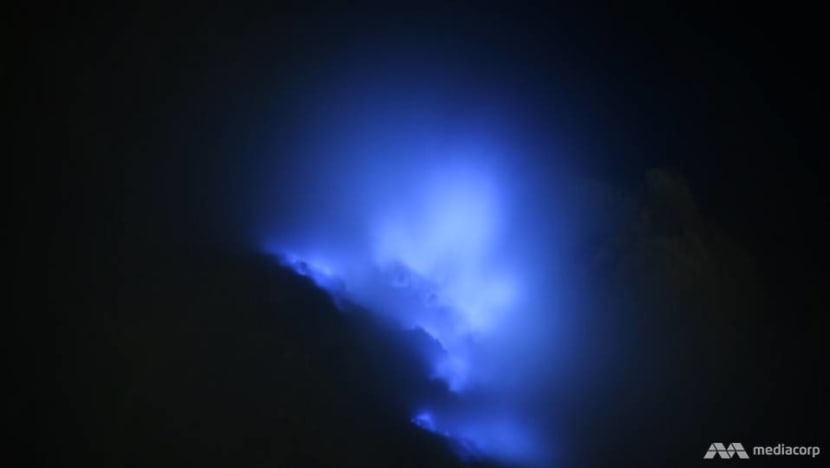
At 3am he will rise again, perform his morning prayers and set out in the black on his motorcycle to the foot of the park entrance. A three-kilometre hike awaits, one that has visitors gasping for air and crouching down on their haunches along the way.
Yatim has walked these slopes thousands of times and seems to move breathlessly, each step almost graceful in its ease. It is cold for him though this morning; a heavy mist has rolled in bringing bursts of rain and a chilling wind.
The sun infrequently bursts through the low-hanging atmosphere, providing some warmth and igniting the colour of the acidic lake. Even though these men mostly see the crater as little more than a place to earn an income, he will still occasionally pause to take in the view.
“This is such a beautiful place,” Yatim says. “Even for me.”














